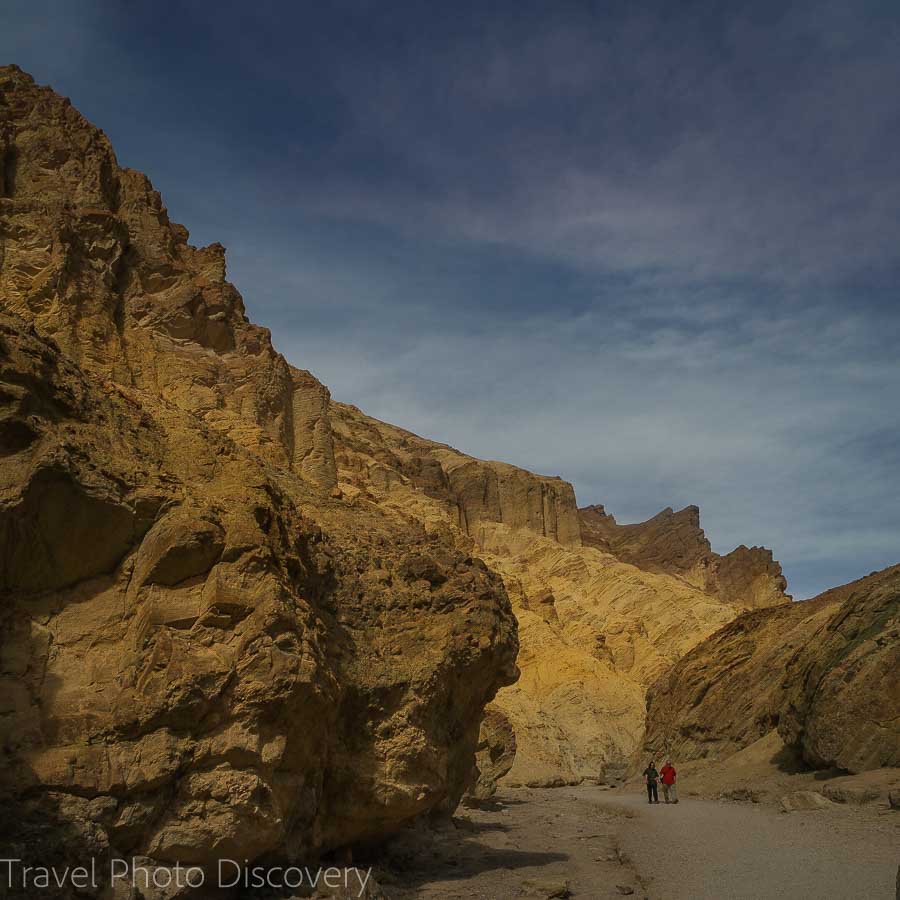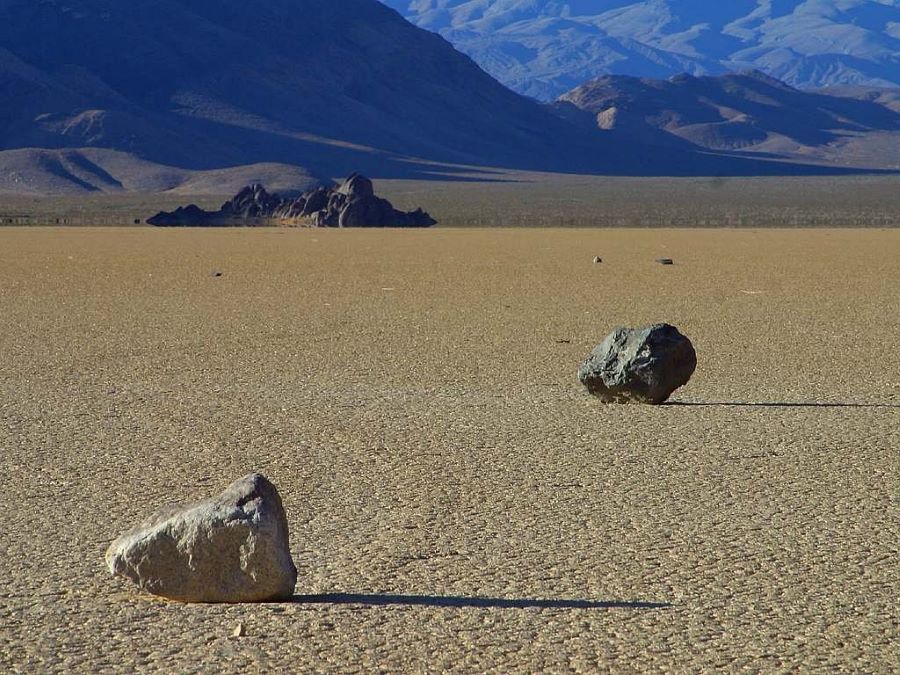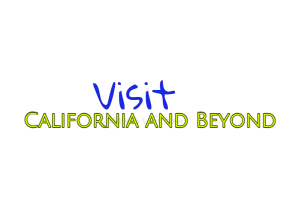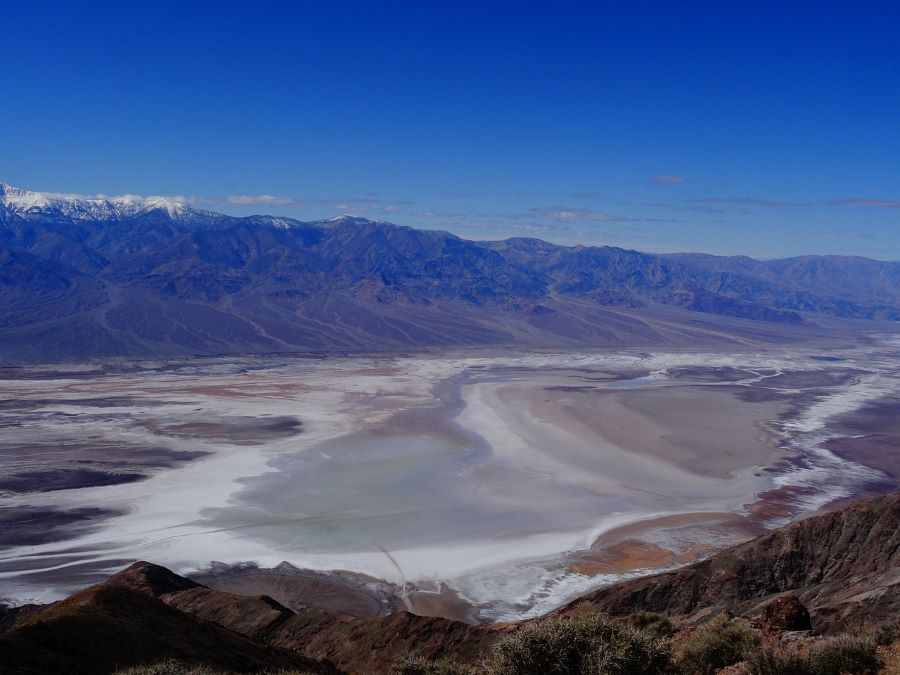Explore Death Valley on this day trip from Las Vegas
I totally love doing road trips and this Death Valley Road trip from Las Vegas is a totally fun adventure and definitely a long day trip experiencing the best of this national park in California.
The Death Valley Day trip from Las Vegas is actually doable in one full day visiting this national park, although I would advise staying overnight to get to see more attractions and cool sites around the park and at times when the public is still not there. Death Valley is harsh, hot and full of life and intrigue. This includes a loop route of the park entering the south side of the national park and then exiting on the eastern exit back to Las Vegas.
A visit to Death Valley from Las Vegas will bring you to the lowest, driest and hottest place on earth, but depending on the timeframe that you visit, it can be quite pleasant and not so difficult to visit. In this article get the details on how to plan and spend an effective day visiting the main attractions and landscapes on a Death Valley Day trip from Las Vegas.
Continue reading for more details on this Death Valley day trip itinerary.
Explore Death Valley on this day trip from Las Vegas, passing cool landscapes, unusual vista points and a ghost town along the way

Details to this day trip to Death Valley from Las Vegas
This itinerary starts and stops in Las Vegas and the two routes to the park enter at the south entrance of the park from Pahrump and then exits from the east entrance of the park into the city of Beatty on the Nevada side.
This day trip will be a long day but you will definitely get to see the most popular attractions around the park and if you do a longer road trip experience, you can actually see more of the top places to visit in the park.
The drive to Death Valley is on nicely maintained asphalt roads so you can easily take a rental car on this road trip with you, just make sure that you have a full tank of gas before you start this day trip.
In order to see most of these attractions, plan on leaving early by 7am from Las Vegas. If you leave earlier like 6am, then there are some options for you to do around the park with more time to visit and maybe even capture a great sunrise experience along the way to the park.
Eating options are limited at the park so we suggest packing a lunch or snacks with you to save time and money on this day tour. This will give you more time to explore and do some more of the short hikes around each of the locations we describe below.
Tip – consider filling up along the way around the main junction before the south entrance at Pahrump in Nevada.
Is it safe to drive to Death Valley from Las Vegas?
Yes, it is safe and all the roads from Las Vegas to the national park are paved so it is easy to take a rented car to visit this national park. Just be wary of sunrise or sunset timeframes when you visit so that you can comfortably travel in the late or early hours of the day.
Also, the closest airport to Death Valley is located at Las Vegas International Airport which is approximately 110 miles to the park entrance.
Tip – Cell service at the national park and most of the route passing through the southern and eastern entrance will have poor service so don’t rely on any service and use the maps that are given to you or just download them into your phone ahead of time.

Road trip details
Las Vegas to South Entrance of Death Valley
One way – 110 miles
Driving time: 2 hours approximately
Driving around Death Valley National Park
Approximate mileage around the park – 130 miles
Drive time: allow around 4 hours approximately
Return Death Valley to Las Vegas
One way return – approximately 130 miles
Drive time: 2 hours
Total time frame Death Valley day trip from Las Vegas
Total mileage allocated – approximately 370 miles
Drive time – 8 hours
Hiking time – limited to short hikes and vista point walks. If you want to do longer hikes in the park, consider spending an overnight stay so you can do longer hikes and explore the unique places around the park.
If you follow this itinerary, you’ll pass through the south entrance and head around Furnace Creek Road and onto the main attractions in the park area.
* If you want to visit Death Valley but don’t want to do the driving and have a guide, then consider this guided tour of Death Valley from Las Vegas here for an easy and relaxed travel experience and all you need to do is show up for the tour.

A little background and history to Death Valley National Park
Originally Death Valley was an area where early pioneers were seeking passage through the southern Sierra Nevada mountains. The hot, arid and unforgiving landscape was not easy for wagon trains that passed through this area but the pioneers continued. Death Valley became an importing mining town for borax and had a boom around the 1880s. Many prospectors also came through the park area to outlying areas that became boom towns for the ore mines that were started in the region for gold, copper, silver and other precious minerals.
This lead to the Pacific Borax Company setting up a philanthropic pursuit of lobbying their industry into a protected space and this created a designation of a National Monument in 1933. Death Valley was turned into a National Park in 1994.

Drive to south entrance to Death Valley
For this day tour from Las Vegas take the southern route from NV -160 to Pahrump and the Death Valley Junction. This scenic route is definitely more beautiful than the eastern route and if head out earlier then you will have more places on our suggested things to do available for you to take on.
Top things to do and see on this Death Valley Road trip
These are the popular and must see places around Death Valley on this one day tour, if you want to see more, I would recommend an overnight stay to explore more places and do more hikes in the national park. The tour begins at the south entrance of the park and passes through most of the main attractions that you will see on a road tour of the park area.
Entering the South Entrance of Death Valley
When you arrive at the South entrance to the park, the main welcome to Death Valley sign will appear and is always an easy stop and do some selfies.
There is no check in gate at the entrance but a self-check station for those entering the park. The entrance fee is $30 which is valid for 7 days and an automated receipt will be processed. Place the receipt from your payment on your dashboard and you can continue on your way into the park.

Dante’s View
One of the most spectacular viewpoints of the entire park is at Dante’s View which is a left from the pay station on Furnace Creek Wash Road, continue until you see the signs for Dante’s View and follow that for 13 miles to reach the top of Dante’s View. You’ll drive uphill on switchbacks and curving roads until you reach the parking lot. There are short trails on both sides of the parking lot with viewpoints to the park area. Stretched out in front of you is Badwater Basin which is the lowest point in the United States. We will pass through this area later when we get back to the valley floor.
Take in those views and enjoy some of the short hikes with different viewpoints to the park and some fun selfie shots you can take in the area before you head back downhill to the valley.

Twenty Mule Team Canyon
Drive back downhill and make a left to our next stop which is about 6 miles at the Twenty Mule Team Canyon. This is a beautiful one way road with gorgeous white and yellow sandstone hills in the canyon area and once a thriving borax mining area. There are small hiking trails that you can do from a small turnoff about two thirds of the way through the canyon. You can enjoy some easy and short trails to get out and enjoy the views on some of these walks.

Zabriskie Point
One of the most popular visits to the park is at Zabriskie Point and less than a five minute drive from the Twety Mule Team Canyon. From the parking lot, there is an asphalt trail that leads you to the viewing point which is spectacular and probably the busiest attraction you’ll encounter at the park with lots of visitors.
This is probably a great spot to take a nice lunch break at the viewpoint and spend your lunch with some fantastic views of Zabriskie Point.

Artist Drive and Artist Palette
One of the most colorful parts of the park taking the Artist Drive which is a one directly road that winds through this scenic area and you can hike to the Artist Palette. The Artist Palette is striking with these vibrant colors that are formed in the rocks and created with the oxidation of the minerals from the rocks. The best time to see all the vivid and bold colors will be during the day time in full sunlight.
The nine-mile road is truly unique and one of the most popular drives winding through the eroding and multi-colored hills. There are cyclists and hikers walking through the road so do pay attention to the one lane road.
Here’s a quick video tour of the Artist Drive and also the Artist Palette area below

Devil’s Golf Course
This is a continuation of your drive on Furnace Creek and easy to take a quick photo stop. Basically called the Devil’s Gold Course for the small jagged salt rocks that dot the floor and are surprisingly sharp. Continue on from here to the the lowest point of the USA at Badwater Basin.

Badwater Basin
What makes this area unique outside of the title of being the second the lowest point in the USA is the formations of salt flats on the desert floor and cover a distance of 200 square miles and making it the largest salt flats in the world. There is no actual designated trail so you can walk on the salt flats directly or a short board walk area that will let you walk out a short distance.
The salt flats developed from rain and minerals drained to the lower basin area and forming small lakes after the heavy storms and eventually evaporates and leaving the minerals to form these salt flats in the area.

Mesquite Flats Sand Dunes
One of the most unique features of Death Valley are the photogenic dunes at Mesquite Sand dunes located close to the StovePipe Wells visitors center. There are no real trails here but a series of sand dunes you can walk across and find your perfect photo op moment. The dones cover a vast area with the highest dune rising about 100 feet.
This is a very popular spot to visit for sunrise or sunset time frame in the park and capture the golden light across the dunes and the different shadow effects mixed in the sunset colors coming across the horizon area. The beautiful ripples, ridge lines and more contrasts coming out during this time frame. Night time is also a great time to visit the Mesquite Flats to witnesss Death Valley’s incredible night skies and stars.
** If you want to hike to the tallest dune, it is located about two miles and takes about 1.5 hours and is a moderate hike through sandy area.
Explore the Mesquite Flats Sand Dunes in this video below

Exit Death Valley East end to Las Vegas
After Visiting the Mesquite Flats, return back towards Hwy 190 and make a right on Daylight Pass Road (Hwy 374) towards the east entrance of the park . If you have more time in your window depending on sunset, you can also visit the Rhyolite Ghost town located just outside of the park on the Nevada side. You continue on Highway 374 towards Beatty and turn right at the Junction to Hwy 95 to your return back to Las Vegas area.
More interesting details about Death Valley National Park
Here’s some interesting trivia and fun things to know about visiting Death Valley National Park, just in case you want to know about this for your next Trivia Pursuit game.
Death Valley is known as the driest, hottest and lowest park in elevation of all the national parks in the United States.
Outside of Alaska, Death Valley is the largest US national park located in the United States and covers over 3,373,063 acres with more than 93% designated as wilderness area.
The park has been a natural monument and was designated in 1933 and then in 1944, Death Valley was declared a National Parl.
The park receives less than 2 inches of rain annually with four mountain ranges the prevent rain from falling into the valley floor and keeping the basin floor very dry.
The water that is found on the park area is very salty and not drinkable, so make sure to bring plenty of water while you are visiting and hiking outdoors.
Death Valley was named from the pioneer settlers who were headed for the gold bearing areas during the gold rush of 1849. There were also wagon trains that were trying to avoid the miserable trek through the Sierra mountains and looking for a route to California in order to avoid travel across the Sierra Mountains.
The valuable ores from surrounding mines in the region included: gold, silver and copper mines that created boom and bust towns in the surrounding region.
The Valley floor at Badwater Basin is the second lowest point in the Western Hemisphere at 282 feet below sea level.
Unesco designated Death Valley as the principal feature to the Mojave and Colorado Desert Reserve in 1984 as an additional certification to Unesco World Heritage status.

Extend your visit to Death Valley National Park
If you have a little bit of free time with this day trip consider doing the following other attractions. Or, consider staying overnight at the park or surrounding towns and you can explore more thoroughly.

Rhyolite Ghost Town
Just about 30 miles from Stove Pipe Wells in the park, Rhyolite Ghost town located on the Nevada side is a fascinating deserted ghost town with many interesting buildings and facades that you can visit and is free for the public to explore on their own. This old mining town was a boom and then bust with the various ore mines that developed in the area and spawn a boom town filled with bars, casinos, brothels, hotels and bathhouses and a whole slew of business supporting the mining industry. You can visit outside of the east entrance of the park and explore on your own.
If you area heading back to Las Vegas continue down Hwy 374 towards Beatty and make a right on Hwy 95 towards Las Vegas.
Check out this video about visiting the Rhyolite Ghost Town

Natural Bridge
The Natural Bridge is an easy to do hike and short road trip through dusty roads off the main road. Located across from the Badwater Basin, a dirt trail around a few miles gets you to the parking lote and the hike to the Natural Bridge is flat through a narrow dry gorge area less than one mile round trip and you’ll come across this beautiful arch bridge that is an easy back and forth hike.

Golden Canyon
One of the popular and easy to do hiking trails to the Golden Canyon that ranges from 3-8 miles and extends to Grower Gulch or Zabriskie Point lookout. This hike is flat except for some short inclines and is relatively easy to moderate to hike.

Death Valley Race Track
This weird phenomenon is indeed very odd with these large rocks dotting the landscape with tracks that show their actual trails that seem to just come out of nowhere on the desert floor. Some explanations share that the rocks come down from erosion onto the desert floor and then leaving tracks up to 1500 feet which is hard to understand how this was actually accomplished.
Check out this video about the Race Track Playa
Weather and best time to visit Death Valley National Park
Death Valley National Park, located in Eastern California, is known for its extreme desert climate, unique landscapes, and stunning natural features. When planning a visit, it’s crucial to consider the weather, as conditions can be harsh. The best time to visit Death Valley depends on your tolerance for heat and your desired activities:
Late Fall (November to December): Late fall is one of the best times to visit Death Valley. The scorching summer temperatures begin to drop, and daytime temperatures become more comfortable, ranging from 70-80°F (21-27°C). It’s an ideal time for hiking and exploring the park without the extreme heat.
Winter (January to February): Winter in Death Valley is mild during the day, with temperatures averaging around 60-70°F (15-24°C). Nights can be chilly, so be prepared for cooler temperatures. This season is suitable for hiking, sightseeing, and photography, as the park’s stark beauty shines without the intense summer heat.
Early Spring (March to April): Early spring is another excellent time to visit Death Valley. Daytime temperatures are pleasant, ranging from 70-90°F (21-32°C). Wildflowers often bloom during this time, creating a colorful spectacle. It’s a fantastic time for outdoor activities and enjoying the park’s unique landscapes.
Late Spring to Early Summer (May to June): Late spring and early summer mark the beginning of scorching heat in Death Valley. Daytime temperatures can soar well above 100°F (38°C) and even reach 120°F (49°C) or more in June. This extreme heat can make outdoor activities dangerous, so it’s generally not recommended to visit during these months.
Mid to Late Summer (July to August): The middle of summer is the hottest time in Death Valley, with daytime temperatures often exceeding 120°F (49°C). Visiting during this period is not advised due to the extreme and potentially life-threatening heat.
In summary, late fall, winter, and early spring are the best times to visit Death Valley National Park, as the weather is milder and more conducive to outdoor exploration. Late spring and summer are extremely hot and can be dangerous, so it’s essential to plan your visit during the cooler months to fully enjoy the park’s unique and otherworldly landscapes. Always take precautions, stay hydrated, and be prepared for the desert environment, regardless of when you visit.

Details visiting Death Valley National Park
Operating hours – Open daily 24 hours
Main Visitors Center is located at Furnace Creek
Address: Airport Rd, Furnace Creek, CA 92328
Website – Death Valley NPS
P.O. Box 579 Death Valley, CA 92328
Consider a guided tour of Death Valley
If you want to leave all the planning, touring and driving arraned and done with a guide and driver, then consider these tours of Death Valley from Las Vegas below.
This all day tour to Death Valley to Las Vegas will take you to all the main attractions and includes a boxed lunch with your tour
Check for availability and time frames here
Small group tour of Death Valley
This small group tour of Death Valley leaves at 8am and includes hotel pickup and drop-off, boxed lunch, and plenty of bottled water. The tour takes in all the main attractions in the national park
Check for availability and time frames here
Check out these other posts and road trips from Las Vegas
If you are looking for more road trips and places to explore around Las Vegas, check out our posts below.
Top things to do in Palm Springs
Palm Springs to Joshua Tree National Park

Conclusion to a Death Valley Road trip from Las Vegas
I would definitely do this trip as a day trip or even a guided tour from Las Vegas to visit Death Valley, it is a long day but really worth the effort and drive and return. I would also do an overnight stay to enjoy more of the park and not feel rushed about seeing all the highights in the park and even doing some fun hikes in the area.
If you decide to visit Death Valley National Park from Las Vegas, you should definitely follow this guide to seeing the best of the attractions and short hikes within the national park. Thanks for visiting USA Road Trip Now and checking out this post on a Death Valley Road trip from Las Vegas.
Hope that this post has been helpful to planning your visit to Death Valley and if so, please do share it with any of the social media channels and buttons located below.
Disclosure – some of the links above are to affiliate sites that are either reviews or recommendations if you book helps to keep our site running at no additional cost to you. We appreciate your supporting our website meanwhile.


Trackbacks/Pingbacks